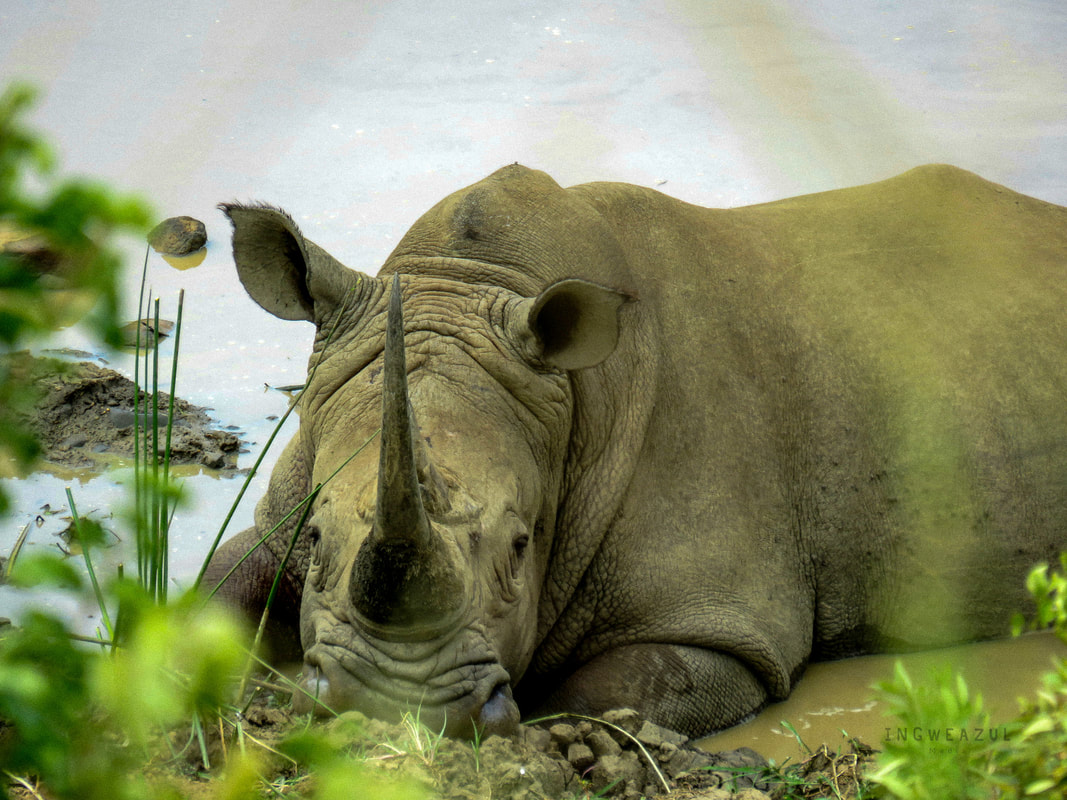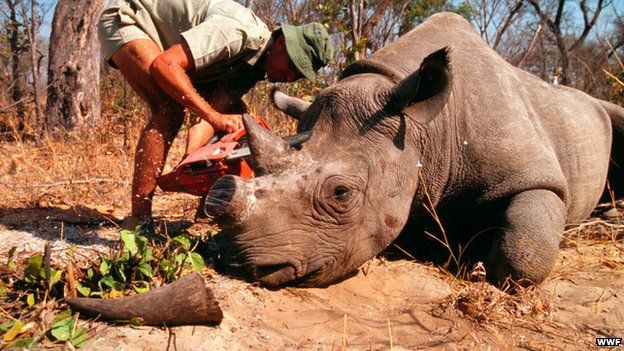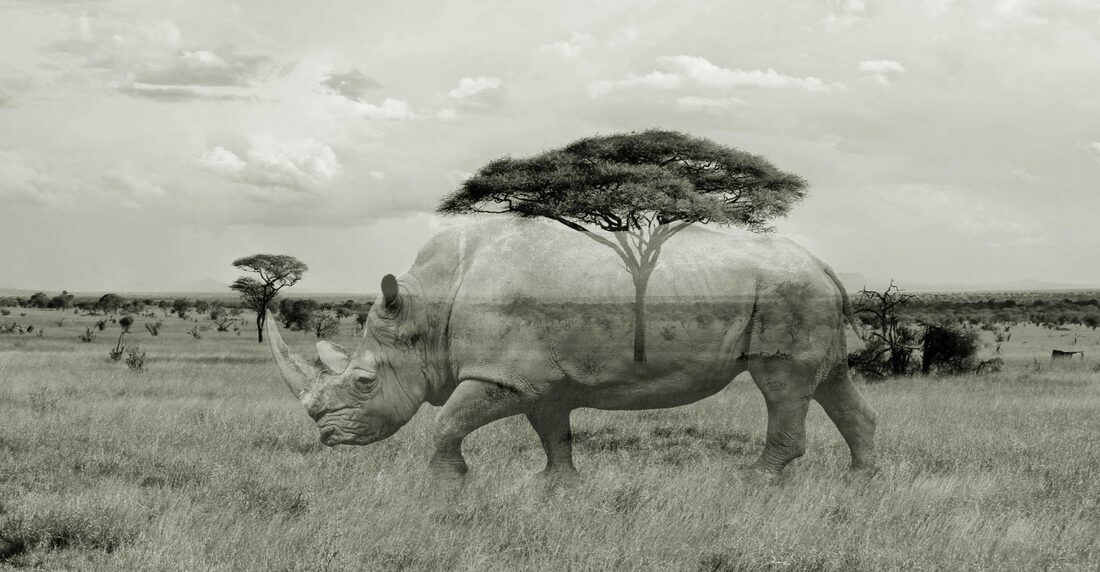The Necessity
In the realm of wildlife conservation, few issues evoke as much debate and contemplation as the practice of dehorning Rhinos. These magnificent creatures, once widespread across the savannas and forests of Africa and Asia, now face a dire threat from poaching driven by the illicit trade in their horns. In response, conservationists have turned to drastic measures, including dehorning, as a means to protect these iconic animals. However, the practice is not without controversy, raising ethical, practical, and even philosophical questions about our approach to preserving endangered species.
Understanding the Crisis
Before delving into the complexities of dehorning, it's crucial to understand the context of the Rhino poaching crisis.
Rhinos are hunted relentlessly for their horns (A staggering est 2600 remained in Kruger Park in 2020 after an approximate number of 10 600 in 2011), reasons which include erroneous beliefs of medicinal properties in China, despite scientific evidence to the contrary (It’s only made up of the protein, keratin, basically compressed hair) and a sign of affluence in Vietnam. As a result, Rhino populations have plummeted, with some species teetering on the brink of extinction (currently only 2 known Northern White Rhinos exist). Conservation efforts have thus far struggled to curb poaching effectively. Despite increased security measures and anti-poaching initiatives, the demand for Rhino horn remains high, fueled by lucrative black markets. In this battle to save the Rhino, conservationists have turned to unconventional methods, including dehorning, as a means of protecting these vulnerable animals. The Practice of Dehorning
Dehorning involves the removal of a Rhino's horn, typically through a tranquilizing process carried out by experienced veterinarians. The procedure is performed with meticulous care to ensure the safety and well-being of the animal. By removing the horn, which is the primary target for poachers, conservationists aim to reduce the incentive for illegal hunting while allowing the Rhino to continue living without the constant threat of poaching.
The Controversy Surrounding Dehorning
While dehorning may seem like a straightforward solution to the poaching crisis, it is not without its critics. Some argue that removing a Rhino's horn fundamentally alters its natural behaviour and compromises its ability to defend itself, find mates, and establish social hierarchies.
Additionally, there are ethical considerations to weigh. Critics contend that dehorning robs Rhinos of an essential aspect of their identity and undermines their intrinsic value as living beings. There is also the question of whether it is fair to alter the appearance of an animal simply to protect it from human greed and exploitation. Furthermore, dehorning is not a fool-proof deterrent against poaching, as determined poachers still target dehorned Rhinos for the stub that has an economic value, albeit lesser, and to avoid tracking and pursuing the same individual again. The question here is, does the dehorning really work? Or should we be putting the approximate cost of $1 500 per Rhino towards anti-poaching (patrols, community programs and effective prosecutions) as well as education in Vietnam & China. The Conservation Imperative
Despite these reservations, many conservationists would argue that dehorning is a necessary and pragmatic measure in the fight to save Rhinos from extinction. With populations dwindling and poaching rates soaring, desperate times call for desperate measures. Dehorning, when carried out responsibly and ethically, can buy valuable time for conservationists to address the root causes of poaching, such as poverty, corruption, and the demand for Rhino horn.
Moreover, dehorning is often implemented alongside other conservation strategies, such as community engagement, habitat protection, and anti-poaching patrols and general education. It is but one tool in the conservation toolbox, albeit a controversial one. At best, dehorning reduces poaching in the reserve where it is implemented but the poachers just apply there gruesome skills in the nearest reserve without dehorned animals. In 2023, in KwaZulu-Natal, South Africa, where private reserves carry out dehorning, state-run Hluhluwe-iMfolozi lost over 300 rhinos due to a lack of resources and an inability to deal with increased poaching pressure. Looking Ahead
As we navigate the complexities of Rhino conservation, it is essential to approach the issue with humility, compassion, and a willingness to adapt our strategies in response to new challenges and insights. Dehorning is not a perfect solution, in a world where Rhinos are being slaughtered at an alarming rate, it represents a temporary reprieve.
Is it a lifeline for a species on the brink, or are there more effective measures? Such as the newly (2018) introduced anti-poaching K-9 Units that have proven highly effective. They are able to track poachers for miles as well as detect illegal animal products in vehicles and homes allowing authorities intervention on suspected poachers & traffickers. Ultimately, the fate of the Rhino rests in our hands. It is up to us to confront the root causes of poaching, to address the underlying socio-economic factors that drive the illegal wildlife trade, and to cultivate a global ethic of stewardship and respect for the natural world. Only then can we hope to ensure a future where Rhinos roam freely, their horns intact, for generations to come. Other proposed strategies: Keep Rhino Alive
0 Comments
Leave a Reply. |
AuthorPhotographer, conservationist, dive and field guide, teller of bad jokes. Archives
July 2024
Categories
All
|
-
Safari & Beach
-
Diving & Snorkelling
-
Africa and the Indian Ocean
>
-
Caribbean & Americas
>
-
Indonesia
>
- Bali >
- Komodo National Park >
- West Papua and Raja Ampat >
- Lembeh >
- Bangka Island >
- Siladen Island >
- Manado >
-
Indonesia Liveaboards
>
- Raja Ampat Aggressor
- Emperor Raja Laut
- Ondina Liveaboard
- Sea Safari 8
- Sea Safari VI
- Sea Safari VII
- Cheng Ho
- Amira Liveaboard
- Indo Aggressor
- Tambora Liveaboard
- Seahorse Liveaboard
- Adelaar Liveaboard
- Damai I Liveaboard
- Damai II Liveaboard
- Tarata Liveaboard
- Ambai Liveaboard
- Gaia Love
- Putri Papua
- Indo Siren Liveaboard
- TemuKira Liveaboard
- Solitude Adventurer
- Pearl of Papua
- Seven Seas
- Pindito Liveaboard
- Mermaid I Liveaboard
- Mermaid II Liveaboard
- Dewi Nusantara
- Coralia liveaboard
- Blue Manta
- True North
-
Oceania and The South Pacific
>
-
South East Asia
>
-
Africa and the Indian Ocean
>
-
Specials & Faves
- Safari & Beach Specials
- Solo Safari Specials
- Family Safari Specials
- Dive Specials
- 03 July - Stormers vs British & Irish Rugby, Cape Town
- 07 July - SA Invitational vs British & Irish Rugby, Port Elizabeth
- 10 July - Sharks vs British & Irish Rugby, Durban
- 14 July - South Africa 'A' vs British & Irish Rugby, Nelspruit
- 17 July - Bulls vs British & Irish Rugby, Pretoria
- 24 July - South Africa vs British & Irish Rugby, Soweto
- 31 July - South Africa vs British & Irish Rugby, Cape Town
- 07 August - Springboks vs British & Irish Rugby, Johannesburg
- Contact Us
- Why Book With Us?
- Testimonials
- Giving back
- Indigoblog
-
Safari & Beach
-
Diving & Snorkelling
-
Africa and the Indian Ocean
>
-
Caribbean & Americas
>
-
Indonesia
>
- Bali >
- Komodo National Park >
- West Papua and Raja Ampat >
- Lembeh >
- Bangka Island >
- Siladen Island >
- Manado >
-
Indonesia Liveaboards
>
- Raja Ampat Aggressor
- Emperor Raja Laut
- Ondina Liveaboard
- Sea Safari 8
- Sea Safari VI
- Sea Safari VII
- Cheng Ho
- Amira Liveaboard
- Indo Aggressor
- Tambora Liveaboard
- Seahorse Liveaboard
- Adelaar Liveaboard
- Damai I Liveaboard
- Damai II Liveaboard
- Tarata Liveaboard
- Ambai Liveaboard
- Gaia Love
- Putri Papua
- Indo Siren Liveaboard
- TemuKira Liveaboard
- Solitude Adventurer
- Pearl of Papua
- Seven Seas
- Pindito Liveaboard
- Mermaid I Liveaboard
- Mermaid II Liveaboard
- Dewi Nusantara
- Coralia liveaboard
- Blue Manta
- True North
-
Oceania and The South Pacific
>
-
South East Asia
>
-
Africa and the Indian Ocean
>
-
Specials & Faves
- Safari & Beach Specials
- Solo Safari Specials
- Family Safari Specials
- Dive Specials
- 03 July - Stormers vs British & Irish Rugby, Cape Town
- 07 July - SA Invitational vs British & Irish Rugby, Port Elizabeth
- 10 July - Sharks vs British & Irish Rugby, Durban
- 14 July - South Africa 'A' vs British & Irish Rugby, Nelspruit
- 17 July - Bulls vs British & Irish Rugby, Pretoria
- 24 July - South Africa vs British & Irish Rugby, Soweto
- 31 July - South Africa vs British & Irish Rugby, Cape Town
- 07 August - Springboks vs British & Irish Rugby, Johannesburg
- Contact Us
- Why Book With Us?
- Testimonials
- Giving back
- Indigoblog





 RSS Feed
RSS Feed


